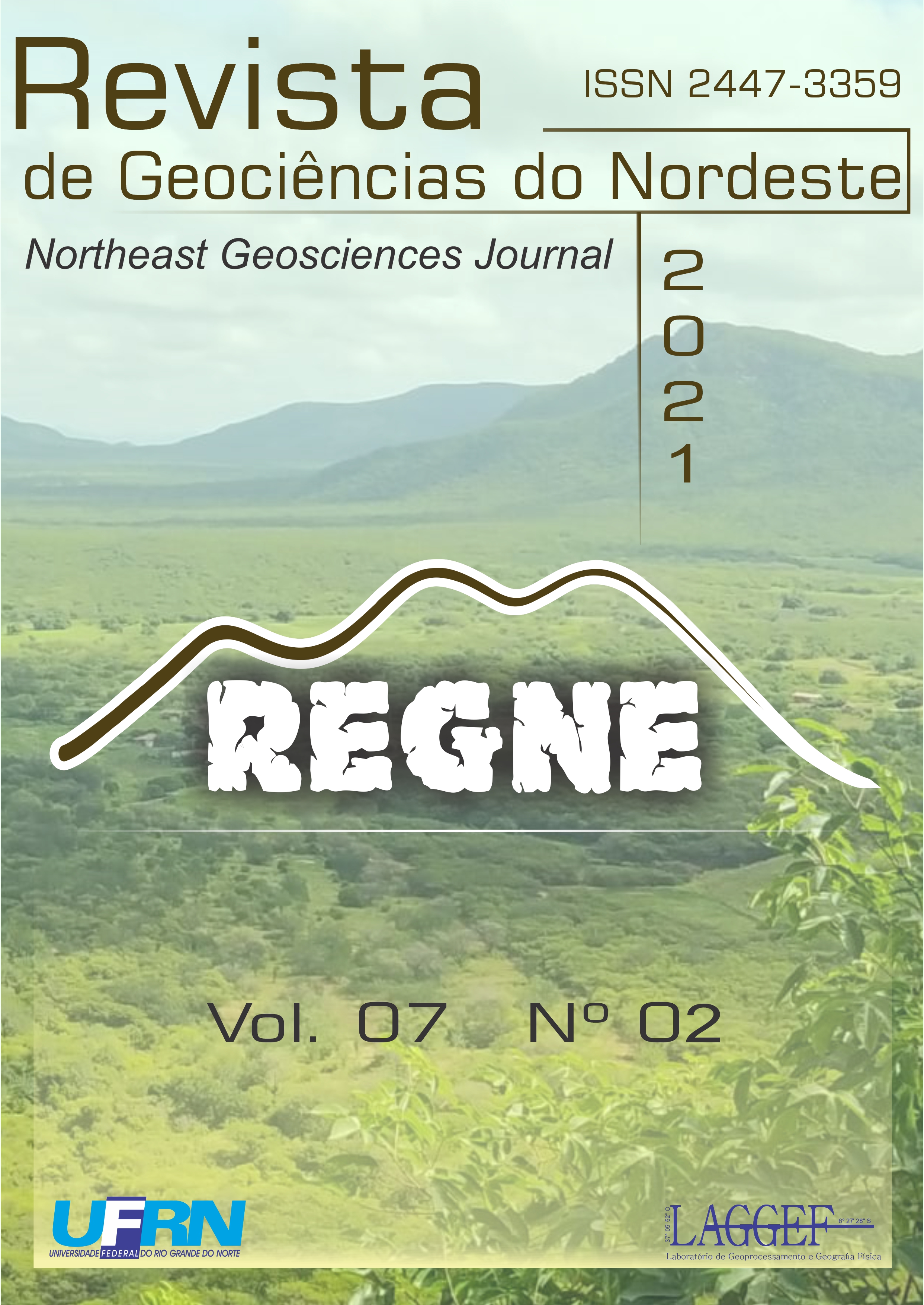Influência dos processos diagenéticos na porosidade dos arenitos da formação iborepi, bacia de lavras da mangabeira, estado do Ceará
DOI:
https://doi.org/10.21680/2447-3359.2021v7n2ID22226Resumo
Análises de processos diagenéticos que atuaram sobre os arenitos da Formação Iborepi foram realizadas em amostras de rochas da Bacia Lavras da Mangabeira. A petrologia e a diagênese desses arenitos é pouco conhecida, principalmente quanto aos processos diagenéticos que atuaram sobre a porosidade original dessas rochas, que podem ser estudadas como análogos de reservatórios de bacias petrolíferas. Estudos petrológico e petrográfico foram realizados em nove lâminas, a fim de avaliar os processos diagenéticos que impactaram a porosidade original dos arenitos Iborepi. Os processos encontrados foram: argila infiltrada como cutículas envolvendo grãos e agregados microcristalinos intersticiais; compactação mecânica e química gerando fraturas em grãos, pseudomatriz em litoclastos dúcteis, micas dobradas e dissolução de grãos originando contatos côncavo-convexos e suturados; precipitação de crescimentos secundários (overgrowths) e projeções de quartzo (outgrowths), caulinita, esmectita e clorita; alteração e substituição de feldspato potássico, muscovita e biótica por caulinita, ilita e clorita. A porosidade dessas rochas é predominantemente primária intergranular, com média de 14%, porém, ocorre porosidade secundária por fratura e dissolução de grãos primários e encolhimento de argila. De modo geral, a porosidade primária dos arenitos Iborepi foi reduzida principalmente por compactação mecânica e química, ciemntação e infiltração de argila, impactando sua qualidade como reservatório de hidrocarbonetos.
Palavras-chave: Arenitos, porosidade, reservatório.


 Português (Brasil)
Português (Brasil) English
English








